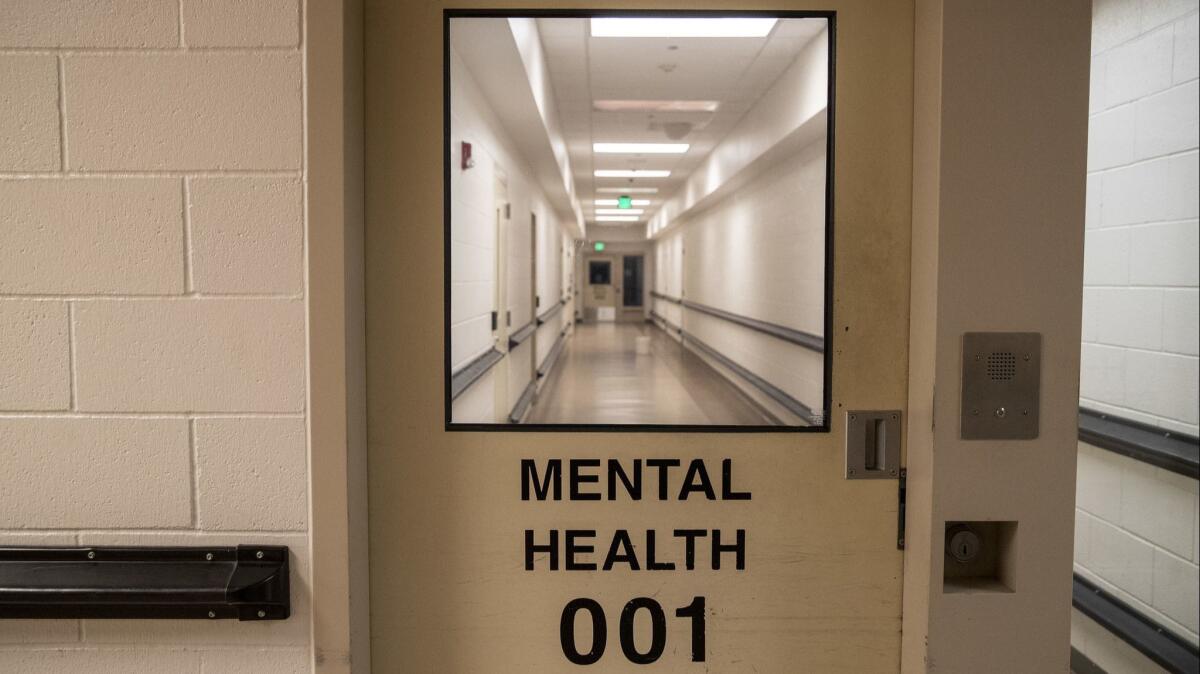Editorial: L.A. County has been thinking big on mental health and public safety. Let’s not backslide

- Share via
When states began closing mental hospitals in the second half of the last century, the plan was never to move hundreds of thousands of patients to jails, prisons or the streets. The intention embedded in the Community Mental Health Act was evident in the bill’s name when President Kennedy signed it in 1963 — to build a community-based system of care that would reintegrate people with mental health and behavioral problems into their neighborhoods with housing, treatment and easy access to services.
The hospitals kept emptying, but fewer than half the promised community clinics were built and even fewer were properly funded or — importantly — linked with services like housing or job training or other programs that are essential to sustained mental health.
In California, the state relinquished responsibility for mental health care to counties, which were ill-equipped to provide what was needed. Counties instead did what they knew how to do — law enforcement instead of diversion to treatment. And they built what they knew how to build — jails instead of mental health clinics.
The result is evident today and has been for years, in Los Angeles County and elsewhere. People who ought to have been directed to mental health care and support now make up a significant portion of the jail and street populations. Those who are arrested for offenses tied to their illnesses or addictions tend to cycle in and out of incarceration without adequate treatment, and without much prospect of improvement.
Los Angeles County has created a modest diversion system to pluck mental patients from jails and connect them with actual healthcare services.
Jails and criminal courts are now the focal points of our behavioral health care system. For most people there is simply no entryway into care, treatment or recovery except through the criminal justice system. The navigators of this system are armed and uniformed police — and judges, prosecutors and prison guards. In a society abounding with medical and mental health expertise, we assign psychiatric care to those institutions least oriented toward recovery, with the worst record of recidivism, and with punishment as their top reason for being.
We must do better.
Over the last several years, Los Angeles County has created a modest diversion system to pluck mental patients from jails and connect them with actual healthcare services. But that serves only a small subset of the population in need. Until recently, the county’s approach to mental health care has still largely focused on building a proposed new jail that would supplement its law enforcement staff with more mental health professionals.
And then, in February, as if a light had been switched on in a dark room, the Board of Supervisors said “no” to a mental health jail and set in motion a series of initiatives that could finally result in something very like the accessible, integrated community-based system of care imagined, but never built, decades ago.
Supervisors appointed an “Alternatives to Incarceration Work Group” that in its recent interim report lays the foundation for a more sensible approach to mental health, substance abuse and a whole range of health and behavioral issues most successfully dealt with outside the criminal justice arena.
The group embraces some bold solutions that will be politically challenging to deliver. Where, for example, will we site all those community clinics and housing, given today’s NIMBY pushback against proposals to build supportive housing for currently homeless people?
But the work group’s job is to identify the right thing to do. It falls to the supervisors to figure out exactly how to get it done.
Meanwhile, discussions are proceeding on a separate track at the county Hall of Administration for a successor to the mental health jail that the supervisors scrapped in February. Will there be a mental health campus of several clinics? Will all be high-security and locked? How much of the funding slated for the jail will be spent at other locations around the county to provide better access and more decentralized, although networked, services?
Enter the Fray: First takes on the news of the minute »
Some of the proposals that have been floated are disconcerting. There is concern that the jail plan still lives — that the only change will be calling it a hospital.
But a jail is still a jail and falls well short of the community-based system of mental health, substance abuse and behavioral care that was long-ago promised, and has been long needed.
On Tuesday, as the supervisors are presented the interim report on smarter, more cost-effective alternatives to jail, they will no doubt recall that the two issues — a new jail, and a community-based care system — are necessarily interlinked. They should also recall their historic vote in February, and realize that this is no time to retrench or retreat.
Follow the Opinion section on Twitter @latimesopinion and Facebook
More to Read
A cure for the common opinion
Get thought-provoking perspectives with our weekly newsletter.
You may occasionally receive promotional content from the Los Angeles Times.









